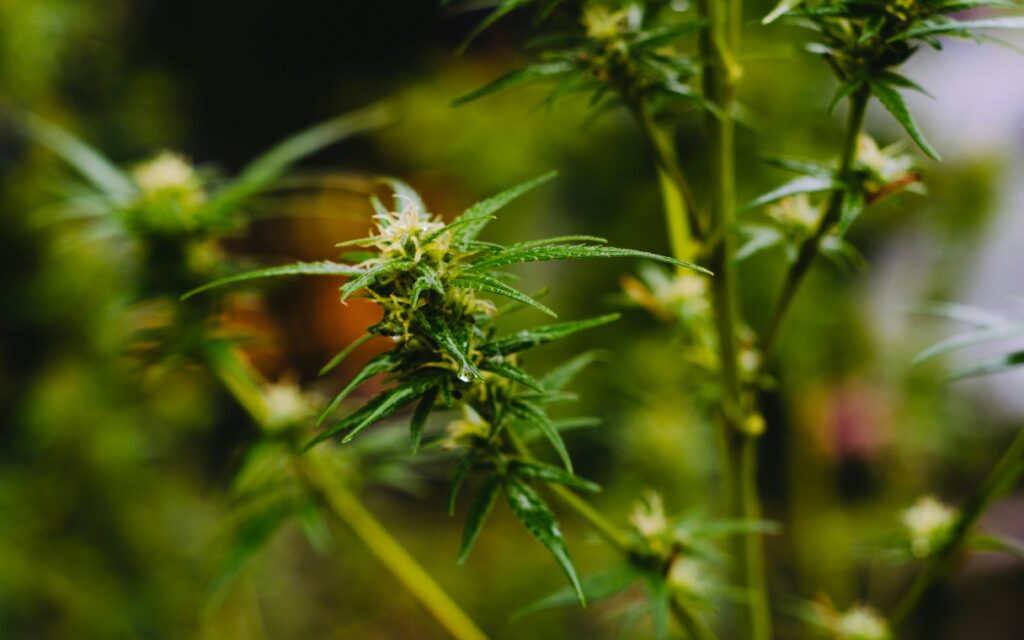Kratom and Cannabis are popular plant-derived substances used by people all around the world for a variety of different reasons. From their counter culture reputation to their unique chemical compositions, both products share a fan base of devoted followers committed to their advocacy. But, apart from them both being plants, Kratom and Cannabis could not be more different. In this blog post, we will look at the similarities and differences between these 2 popular plant based products.
Although Kratom is gaining new popularity in the United States, the plant and its properties are ancient. This tropical evergreen tree, native to Southeast Asia, has been used as an herbal ally by indigenous cultures for hundreds of years. Just like Cannabis, Kratom has a long history of safe use by people from all walks of life. In fact, many people are now including Kratom teas and extracts as a part of their daily wellness routine.
The Active Ingredients In Kratom & Cannabis
While Cannabis and Kratom share many similarities, their active ingredients are completely different.
Cannabis contains hundreds of cannabinoids, which are naturally occurring chemicals that affect the body in many different ways. The most prevalent cannabinoid in cannabis is tetrahydrocannabinol (THC), which is intoxicating, followed by cannabidiol (CBD), which is non-intoxicating.
Kratom’s primary active ingredients are known as alkaloids. The 2 most well known alkaloids in Kratom are Mitragynine and 7-hydroxymitragynine.
While these alkaloids are likely responsible for Kratom’s sought-after properties, they occur in relatively small concentrations in the plant’s leaves compared to THC and CBD in cannabis flower – mitragynine typically clocks in below 2% and 7-hydroxymitragynine is found at much lower levels than that. More research is needed to fully understand the chemical composition of Kratom.
The Legality Of Kratom & Cannabis
Kratom and Cannabis both have very different legal statuses—from federal, to state, and even down to the city level in some cases. It can be challenging to navigate, but to help break it down for you: Kratom is legal at the federal level while Cannabis still is not. Cannabis is legal medicinally or recreationally in 38 states, whereas only 6 states have banned all Kratom products. Check out this article for more information about where Kratom is legal: https://krakenkratom.com/resources/kratom_local_legal/
Regardless of their legal status, both plants carry a level of stigma that we have all unfortunately grown accustomed to. Prohibitionists will use any and every tactic in their playbook to try and limit access to these amazing plants. However, thanks to advocacy groups in both industries, much headway has been made on this front. Movements like the Kratom Consumer Protection Act (KCPA) offer to do even more, by legally protecting access to Kratom for adult consumers.
The Kratom Industry Vs The Cannabis Industry
The kratom industry is unarguably smaller than the cannabis industry, and kratom is not as widely known or used as cannabis…yet. However, there are many similarities between the two industries. For example, the legalization of cannabis and kratom are both supported by underground movements, including those who claim to use the plants for purposes beyond recreation and ritual..
As with Cannabis, the Kratom industry is growing rapidly. Nowadays, you can find Kratom in many different forms including:
- Leaf
- Powder
- Tinctures
- Capsules
- Softgels
- Chewable Tablets
- Gummies
While Kratom hasn’t been studied as thoroughly as Cannabis yet, research indicates the plant is just as safe. As more research is conducted, the Kratom industry will only continue to grow.
How Cannabis & Kratom Are Grown
Kratom is native to Thailand, Indonesia, Malaysia, Myanmar, and Papua New Guinea. Much of the world’s kratom supply originates from huge old-growth forests in Southeast Asia.
While cannabis is a hardy plant that has been cultivated all over the world, most commercial cannabis in the US is currently grown in highly managed indoor grow operations.
Prohibition of Kratom & Cannabis
Cannabis and Kratom both have a history of prohibition. Being effective natural products, they’ve both experienced their fair share of stigma and misinformation.
Just as Cannabis prohibitionists exaggerated its possible side effects, Kratom prohibition often rests on misconceptions and unscientific arguments. As a result, people who use Kratom and people who use Cannabis have both faced immense stigma and discrimination.
Another negative effect of prohibition and stigma is a lack of regulation. The cannabis and kratom industries were largely unregulated for decades. This made it difficult for people to access high-quality, safe products. Fortunately, this is changing and it’s becoming easier to find premium quality products in both industries.
Research On Kratom Vs. Research On Cannabis
Prohibition has made it harder to research Cannabis and Kratom, but not impossible. Renewed interest in the plants, as well as the growing industries around them, means that more research can be funded and conducted.
This research is important, as it’ll help us understand:
- The potential uses of Kratom and Cannabis
- The potential risks of using Kratom and Cannabis
- How to use Kratom and Cannabis safely
Knowledge is power, and future research will hopefully empower those who want to use Kratom and Cannabis to support their wellness.
As with any herbal preparation, it’s important to use these plant products responsibly. If you’re using Kratom or Cannabis, it’s a good idea to talk to your doctor, especially if you’re also using prescription medications. Lastly, look for products from companies that help legitimize the industry. That’s the best way to ensure you’re getting safe, high quality products.
You can find top-quality Kratom products at Kraken Kratom. Thoroughly tested and created with premium Kratom, Kraken’s products come in a variety of forms, including extracts, powders, capsules, tinctures, and more. .





